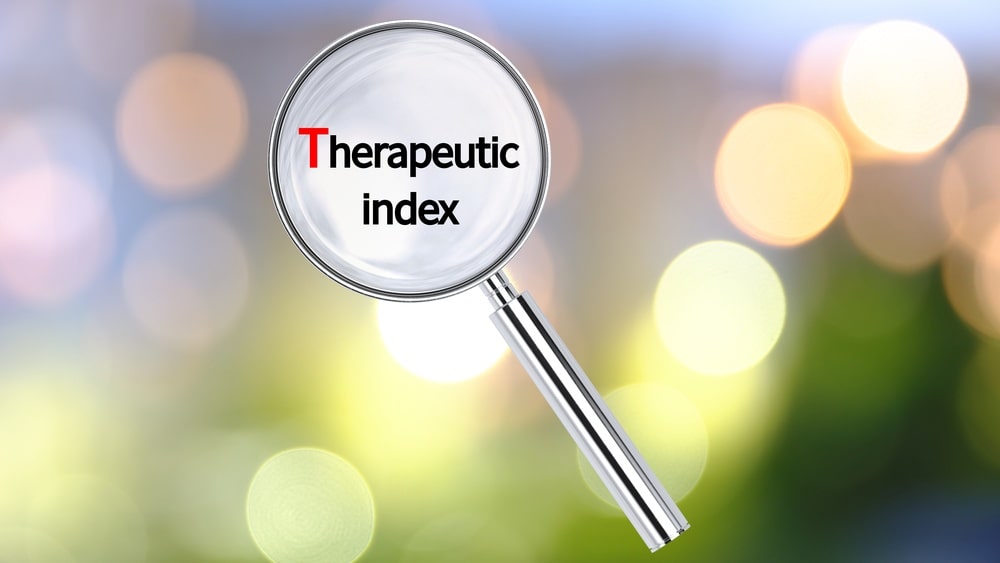Therapeutic Index Pharmacology(TI) is also referred to as the therapeutic ratio. TI is a comparison of the amount of therapeutic agent that causes therapeutic effect to the amount that causes toxicity. In an established clinical setting of an approved drug, TI refers to the dose of a drug that causes adverse effects at an incidence/severity not compatible with the targeted indication (e.g. toxic dose in 50% of subjects, TD50) to the dose which leads to the desired pharmacological effect (e.g. effective dose in 50% of subjects, ED50).
In the early days of toxicology, TI was frequently determined in animals as a lethal dose of a drug for 50% of the population (LD50) divided by the minimum effective dose for 50% of the population (ED50).
Thus in human beings, TI = TD50/ED50; in animals, TI = LD50/ED50
For many drugs, there are several types of toxicities that occur at sub-lethal doses in human beings. These toxicities often limit the maximum dose of a drug. For any drug, a higher TI is always preferable. Higher TI indicates more margin of safety. Generally, a drug with a narrow therapeutic range (having little difference between toxic and therapeutic doses) may have its dosage adjusted according to measurements of the actual blood levels achieved in a person. An example of digoxin can be cited here. Its dose for CHF is 8-12 mcg/kg by IV route, and 10-15 mcg/kg by oral route. The therapeutic range is 1-2.5 nmol/L (0.5-2.0 ng/mL). It indicates that, when the serum concentration of digoxin exceeds 2.0 ngm/ml, it can be toxic and lethal. Thus, digoxin is a drug with low TI.
The therapeutic index varies widely among substances. Amongst the opium pain killers, Remifentani has a therapeutic index of 33,000: 1, while morphine has a TI of 70: 1. Diazepam has a TI of 100: 1. and Digoxin has a TI of 2: 1.
Make sure you also check our other amazing Article on: Dose-Response Relationship
